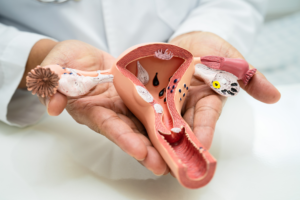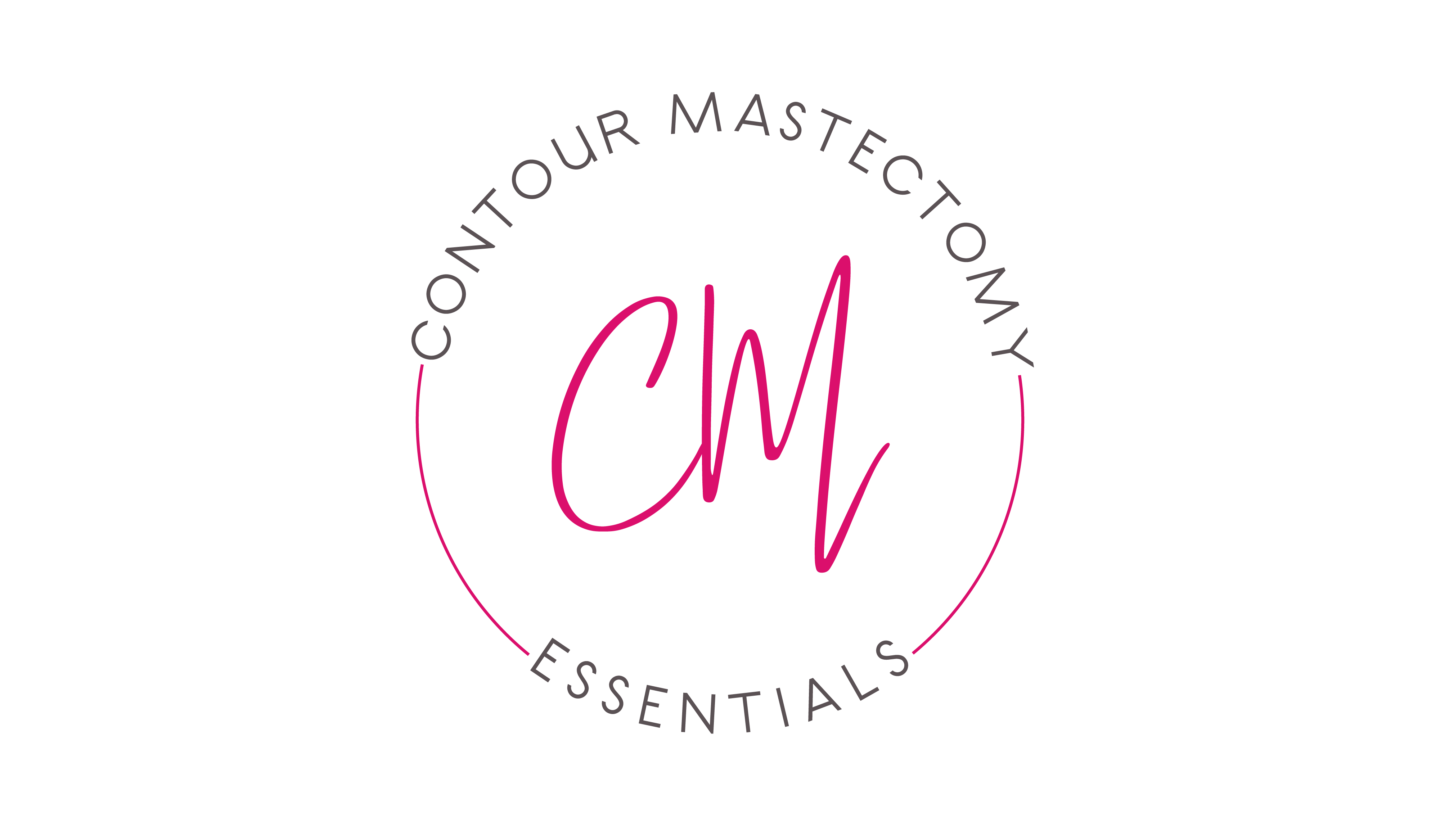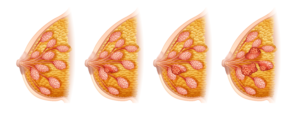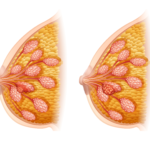Primary Cancer
As noted above, primary cancer refers to the initial cancer a person experiences, whether that is lung cancer, breast cancer, or another type of cancer. It’s possible to have more than one primary cancer; sometimes, these primary cancers are found at the same time, and sometimes, they occur decades apart (see below). This isn’t surprising, as some of the risk factors for cancer, such as smoking, raise the risk of several types of cancer. Several hereditary cancer syndromes increase the risk of cancer in more than one organ or tissue type.
Second Primary vs. Secondary Cancer
Second and secondary cancer are sometimes used interchangeably but can mean different things. The term secondary cancer may refer to either metastasis from primary cancer or a second cancer unrelated to the original cancer. When the term second cancer is used, it usually refers to a second primary cancer, in other words, a different cancer than the first cancer arising in a different organ or tissue.
Secondary Breast Cancer Risks
Women who’ve had breast cancer can still get other cancers. Although most breast cancer survivors don’t get cancer again, they are at higher risk for getting some types of cancer.
The most common second cancer in breast cancer survivors is another breast cancer. (This is different from the first cancer coming back.) The new cancer can develop in the opposite breast or the same breast for women who were treated with breast-conserving surgery (such as a lumpectomy).
Depending on which types of cancer treatment they received (and other factors), some breast cancer survivors might also be at higher-than-average risk for:

-
- Salivary gland cancer
- Esophagus cancer
- Stomach cancer
- Colon cancer
- Uterine cancer
- Ovarian cancer
- Thyroid cancer
- Soft tissue cancer (sarcoma)
- Melanoma of the skin
- Acute myeloid leukemia (AML)
Breast cancer survivors and other types of cancer
The increased risk for these cancers can be due to several factors, including genetic risk factors and the use of some types of breast cancer treatments. For example:
-
- Women with inherited mutations in one of the BRCA genes have an increased risk of breast cancer, ovarian cancer, and some other cancers.
- Radiation therapy to the chest as part of treatment seems to increase the risk for lung cancer (especially in women who smoke), sarcomas (cancers of connective tissues such as blood vessels and bones), and certain blood cancers, such as leukemia and myelodysplastic syndrome (MDS). Overall, though, the increase in risk is slight, and the overall risk of these cancers is still low.
- Specific chemotherapy (chemo) drugs can increase the risk of developing leukemia and myelodysplastic syndrome (MDS) slightly.
- While can lower the chance of hormone receptor-positive breast cancer coming back (as well as the risk of getting a second breast cancer), it can increase the risk of uterine cancer (endometrial cancer and uterine sarcoma). Still, the overall risk of uterine cancer in most women taking tamoxifen is low, so the benefits of this drug in treating breast cancer are generally more remarkable than the slight increase in risk of a second cancer.
Almost any cancer treatment can have side effects. Some might only last a few days or weeks, but others last longer. Some side effects might not show up until years after you finish treatment. Your doctor visits are a good time to ask questions and discuss any changes or problems you notice or concerns. However, if concerns about your cancer come up between visits, you shouldn’t wait until your next scheduled visit. Call your doctor’s office right away.
Follow-up schedules
Your follow-up schedule can depend on many factors, including the type of breast cancer, how advanced it was, when it was found (the stage of the tumor), and how it was (or is being) treated.
-
- Doctor visits: If you have finished treatment, your follow-up visits will probably be every few months. The longer you have been free of cancer, the less often the appointments are needed. After 5 years, they are typically done about once a year.
- Mammograms: If you had breast-conserving surgery (lumpectomy or partial mastectomy), you will probably have a mammogram about 6 to 12 months after surgery and radiation are completed, and then at least every year after that. Women who’ve had a mastectomy (removal of the entire breast) typically no longer need mammograms on that side. But unless you’ve had both breasts removed, you still need to have yearly mammograms on the remaining breast.
- Pelvic exams: If you are taking either of the hormone drugs tamoxifen or toremifene and still have your uterus, your doctor will likely recommend pelvic exams every year because these drugs can increase your risk of uterine (endometrial) cancer. This risk is highest in women who have gone through menopause. Be sure to tell your doctor right away about any unusual vaginal bleeding, such as bleeding or spotting after menopause, bleeding or spotting between periods, or a change in your periods. Although this is usually caused by something that isn’t cancer, it can also be the first sign of uterine cancer.
- Bone density tests: If you are taking a hormone drug called an aromatase inhibitor (such as anastrozole, letrozole, or exemestane) for early-stage breast cancer or if treatment puts you into menopause, your doctor will want to monitor your bone health and may consider testing your bone density.
- Other tests: Other tests such as blood tests and imaging tests (like bone scans, x-rays, or CT or PET scans) are not a standard part of follow-up for most women who’ve been treated for breast cancer because they haven’t been shown to help them live longer. But one or more of these tests might be done if you have symptoms or physical exam findings that suggest that the cancer might have come back.
MammaPrint Breast Cancer Index
Knowing if a woman has a high or low risk of early-stage breast cancer coming back might help women and their doctors decide if chemotherapy or other treatments to reduce risk after surgery are needed. The MammaPrint test may eventually be widely used to help make treatment decisions based on the cancer’s risk of coming back (recurrence) within 10 years after diagnosis.
Genomic Tests
Genomic tests analyze a cancer tumor sample to determine the activity of specific genes. The activity level of these genes affects the behavior of the cancer, including how likely it is to grow and spread. Genomic tests are used to help make decisions about whether more treatments after surgery would be beneficial. The MammaPrint score will help your physician determine your breast treatment plan.
Possible results include:
-
- Ultra Low Risk: MammaPrint Index of 0.355 or greater: People in this category have a low risk of distant recurrence and may safely avoid chemotherapy after surgery. Endocrine therapy is recommended; your doctor will suggest how many years of treatment are appropriate. It’s important to know that while some data shows that people receiving an Ultra Low score may not need extended endocrine therapy, this also depends on the stage and other unique features of the cancer. Talk with your doctor about what’s right for your situation.
- Low Risk: MammaPrint Index between 0 and 0.355: People in this category have a low risk of distant recurrence and often do not need chemotherapy after surgery. Endocrine therapy is recommended (the duration is at the discretion of your doctor).
- High Risk 1: People in this category have a high risk of distant recurrence. Chemotherapy is typically recommended. Endocrine therapy is also recommended. Your doctor will talk with you about how long to take endocrine treatment.
- High Risk 2: People in this category have a high risk of distant recurrence. Chemotherapy is typically recommended, and endocrine therapy is also recommended (the duration is at the discretion of your doctor).
MammaPrint Test Eligibility
MammaPrint can only be used to analyze early-stage breast cancers. MammaPrint can be used on cancers that are:
-
- Stage I, stage II, or stage III that can be removed with surgery
- Invasive
- Smaller than 5 centimeters
- Three or fewer lymph nodes
- Hormone receptor-positive and hormone receptor-negative
The MammaPrint test can be performed on a preserved tissue sample removed during the original biopsy or surgery.
How does the MammaPrint test work?
The MammaPrint test examines the activity of 70 genes and calculates a recurrence score that is either low-risk or high-risk.
If you decide to have the MammaPrint test, you and your doctor take several factors into account when deciding on whether to add chemotherapy to your treatment plan, including:
-
- Age
- Size of the cancer
- Cancer grade
- Whether cancer cells were found in nearby lymph nodes
- General health
Paying for MammaPrint
If you have private health insurance, your carrier may pay part or all the cost of MammaPrint testing. It’s best to check your coverage before you have the test to avoid unexpected expenses. Visit your insurance company’s online portal or call their customer service line to speak with someone about your plan’s coverage policy. Medicare and Medicaid may also provide some coverage of the cost of MammaPrint.
The maker of MammaPrint, Agendia, offers financial assistance programs for people who meet specific eligibility requirements.
Living with secondary breast cancer
You will see your cancer doctor or specialist nurse regularly during your treatment. This helps make sure any problems can be managed. How often you see them will depend on your treatment plan.
You will have regular scans or x-rays to check how the cancer is responding to treatment. Contact your cancer doctor or nurse if you have concerns or notice new symptoms between appointments. If you are undergoing chemotherapy, targeted therapy, or immunotherapy, you will be given a number to call if you feel unwell.
You may need treatment at different times or have ongoing treatment. There may be long periods when the cancer is controlled, and you are getting on with day-to-day life.
You are likely to have different feelings during treatment. You may also be worried about practical issues such as work or finances. It is essential to take care of yourself. This may include:
-
- Getting enough rest
- Trying to keep physically active
- Eating healthily.
We have more information about well-being and coping. It is also essential to get the support you need. You can get support from:
-
- Your healthcare team
- Partners, family, or friends
- Support groups
Health Insurance and Medical Records
Even after treatment is finished, keeping your health insurance is very important. Tests and doctor visits cost a lot, and even though no one wants to think their cancer might come back, this could happen.
At some point after your treatment, you might find yourself seeing a new doctor who doesn’t know about your medical history. It’s important to keep copies of your medical records to give your new doctor the details of your diagnosis and treatment.
Summary
When breast cancer is advanced, it can’t be cured. However, treatment can control it for some time and help to relieve symptoms.
Finding out that you can’t be cured is distressing and can be a shock. It’s common to feel uncertain and anxious. It’s normal not to be able to think about anything else.
You, your family, and your friends have much information and support available. It can help you discover more about your cancer and the treatments you might have. Many people find that knowing more about their situation can make coping easier.
Talk to your doctor or nurse to understand:
-
- What your diagnosis means
- What is likely to happen
- What treatment is available
- How treatment can help you
You and your family will be looked after by a team of people who can provide you with support and information.
References
American Cancer Society
BreastCancer.org
LLBC (Living Beyond Breast Cancer)
Very Well Health
WebMD









